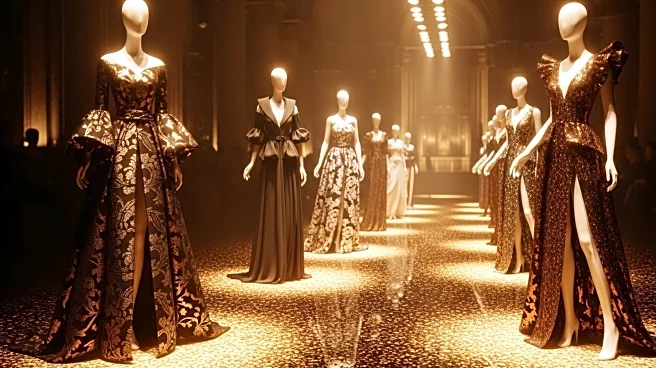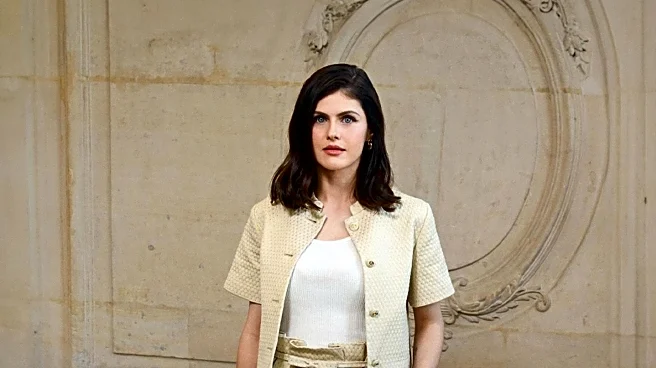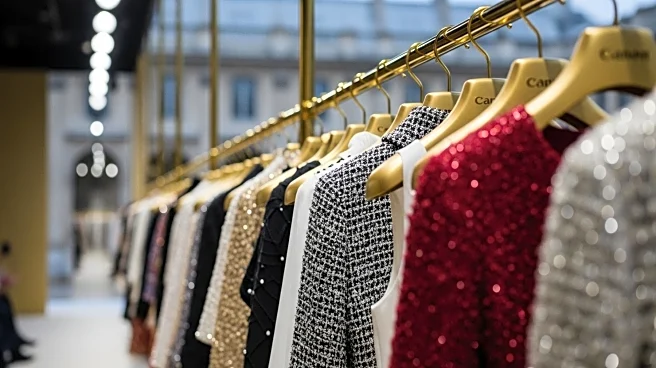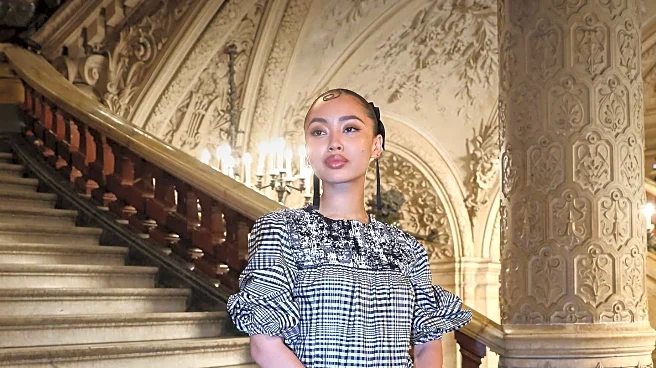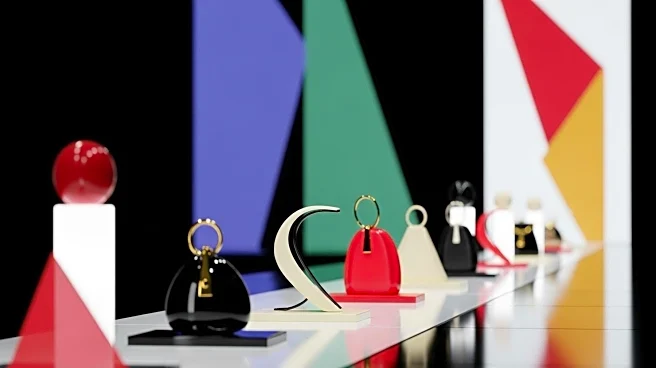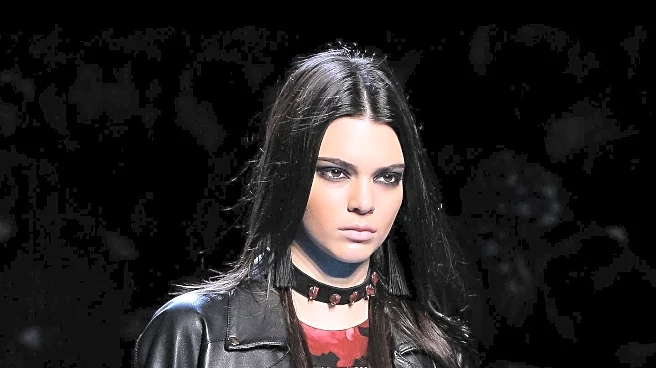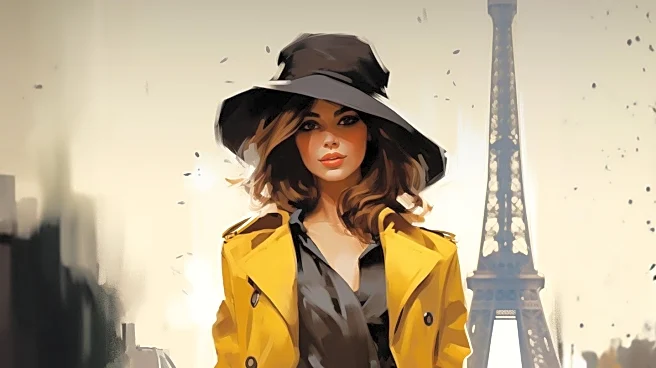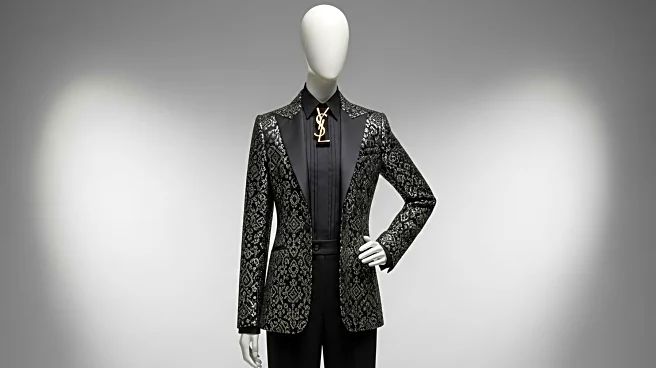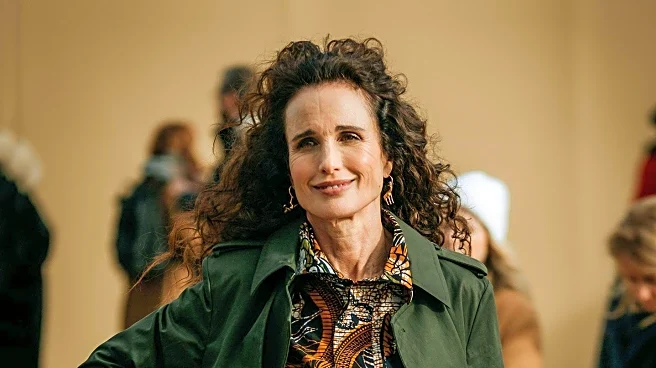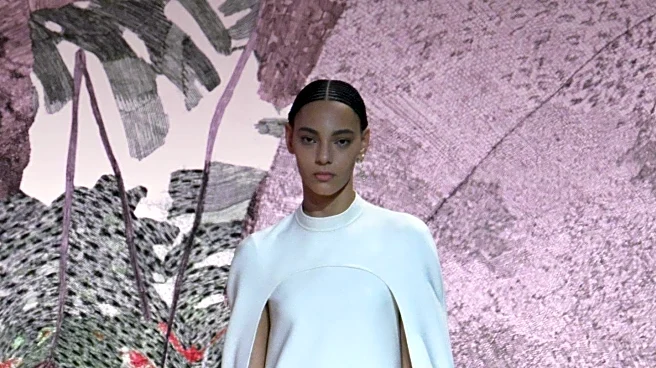What's Happening?
Miguel Castro Freitas, the new creative director of Mugler, unveiled his debut collection for Spring 2026 in Paris. The show took place in a shadowy brutalist underground car park in the 11th arrondissement, a setting reminiscent of the late 1990s Belgian designer influx. Freitas's collection featured the iconic Mugler hourglass silhouette, rendered in double face wool and satin tailoring in shades of concrete gray and pinky beige. The collection also highlighted elaborate jeweled bodices and feathers, showcasing Freitas's intent to restore Mugler's reputation for exemplary handwork. The debut comes amid a wave of new starts in the fashion industry, with Freitas tasked with honoring Mugler's legacy while imprinting his own vision.
Why It's Important?
Freitas's debut is significant as it marks a new chapter for Mugler, a brand with a storied history in fashion. The collection's reception could influence Mugler's position in the competitive fashion industry, particularly as it seeks to appeal to a new generation while maintaining its iconic status. The emphasis on handwork and the blend of classic and modern elements may attract attention from fashion enthusiasts and celebrities, potentially leading to increased visibility and sales. Freitas's ability to balance Mugler's legacy with contemporary trends will be crucial in defining the brand's future direction.
What's Next?
As Freitas continues to develop his vision for Mugler, future collections will likely explore further the balance between honoring the brand's heritage and innovating for modern audiences. The fashion industry will be watching to see how Freitas navigates this challenge and whether his designs resonate with both critics and consumers. The success of this debut could lead to more Mugler pieces appearing on red carpets and in high-profile fashion events, further solidifying the brand's influence.
Beyond the Headlines
Freitas's debut collection also highlights broader trends in the fashion industry, such as the resurgence of interest in craftsmanship and the blending of historical and contemporary styles. This approach may inspire other designers to revisit traditional techniques and silhouettes, potentially leading to a shift in fashion aesthetics. Additionally, the choice of venue and the collection's themes reflect a cultural nostalgia for the 1990s, which could influence other creative industries.

